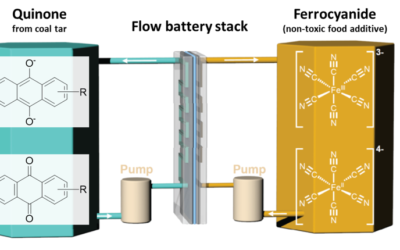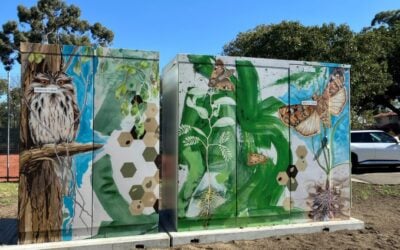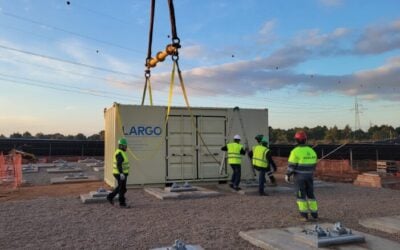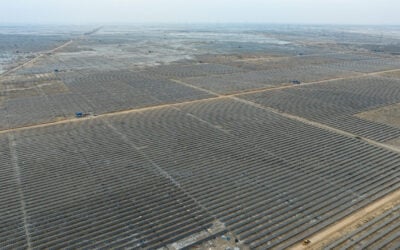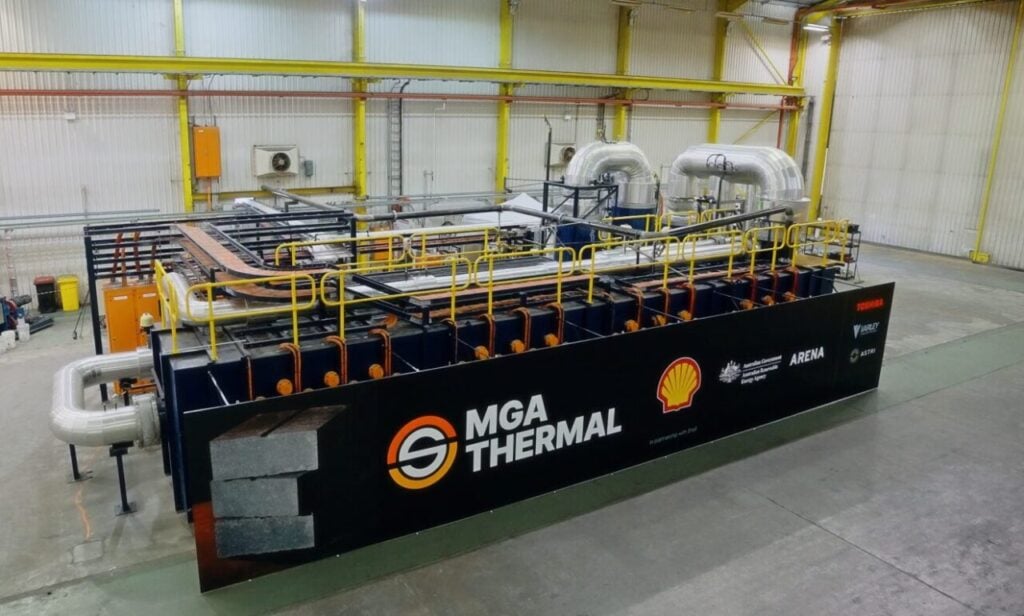
Australian startup MGA Thermal claimed today (29 April) that it has completed the world’s first industrial steam heat energy storage demonstrator project.
The demonstration project saw MGA Thermal utilise its electro-thermal energy storage (ETES) system to store 5MWh of energy with a 500kW thermal dispatch power. This system granted continuous superheated steam for 24 hours.
Enjoy 12 months of exclusive analysis
- Regular insight and analysis of the industry’s biggest developments
- In-depth interviews with the industry’s leading figures
- Annual digital subscription to the PV Tech Power journal
- Discounts on Solar Media’s portfolio of events, in-person and virtual
Or continue reading this article for free
The demonstrator was completed at MGA Thermal’s Tomago site in the Hunter Region of New South Wales, Australia, and eyes are now on the full-scale commercialisation of the thermal energy storage technology.
As previously reported by Energy-Storage.news, the demonstration plant is equipped with MGA Thermal’s brick-shaped ‘Thermal Blocks’ or ‘MGA Blocks’. These use a miscibility gap alloy (MGA) material. Alloy particles disperse through a matrix material, melting as the blocks are heated, while the matrix material remains solid and holds the particles in place.
It stores energy as heat during this solid-to-liquid phase change, releasing the energy as the blocks cool and solidify once more. MGA Thermal claims this design can enable low-cost energy storage for heating or electricity and that it can simultaneously charge and discharge energy.
Around 3,700 MGA blocks were deployed for the demonstrator, which was 12m long, 3m wide and 4m tall.
Mark Croudace, CEO at MGA Thermal and a panellist at the recent Energy Storage Summit Australia 2025 in March, highlighted that the successful plant shows that the technology “isn’t just a concept – it’s a commercially viable solution ready for deployment.”
“As we gear up for full-scale commercialisation, our focus is on partnering with forward-thinking industries, both locally and globally, eager to embrace a sustainable future. The potential for significant emissions reduction is immense, and we are on track to abate 30 million tonnes of CO2 by 2030.”
MGA Thermal’s pathway to full-scale commercialisation
One of this technology’s target markets is the use of heat in industrial processes, which is notoriously tricky to decarbonise and is also being addressed by various other thermal energy storage providers.
MGA Thermal’s investors include Shell, and MGA Thermal recently closed a funding round, having raised AU$8.5 million (US$5.47 million) as reported by Energy-Storage.news in 2023. It also secured AU$1.27 million for its megawatt-hour scale demonstrator from the Australian Renewable Energy Agency (ARENA).
Speaking at the Energy Storage Summit Australia 2025, Croudace noted that the scale of the opportunity to decarbonise the industrial sector is a test for energy storage technologies.
“It’s going through enormous change, and it’s at the very start of it. In contrast to the residential sector, the industrial sector is at least 400% bigger in terms of energy and opportunity.”
However, the technology’s development has not been without its struggles. Indeed, in 2023, an overheating incident at the Tomago site led to emergency services being called to the 5MWh demonstration unit after a “dangerous heat build-up” was declared shortly after 5am local time.
“It is a reminder that we are working on cutting-edge technology, innovating new large-scale energy storage, and the importance of in-house trials,” the MGA Thermal spokesperson said at the time of reporting.
Alongside MGA’s technology, sand batteries, a technology extensively covered on Energy-Storage.news, and molten salt-based thermal energy storage technology have been regarded as attractive means to decarbonise industrial heat.


